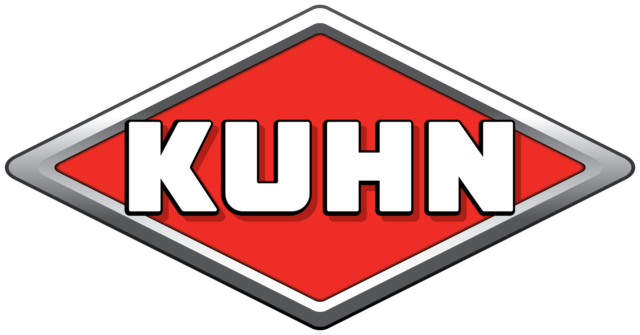Even though there has been variation within the marketplace, the overall value of milk components has risen in the past decade. Milk fat and protein are the principal drivers of prices paid to dairy producers. Plus, research shows greater net income from a 5 percent increase in milk fat or protein versus a 5 percent increase in milk yield.
“Why do we keep talking about the yield of milk as opposed to the yield of fat and protein?” asked Dr. Adam Lock, associate professor, Michigan State University.
Lock and Dr. Tom Jenkins from Clemson University presented on the nutritional regulation of milk components at the Professional Dairy Producers of Wisconsin (PDPW) Dairy Feed and Nutrition Conference late last year.
Jenkins explained milk fat depression is caused by changes in dietary lipid as it passes through the rumen.
The lipid itself is very complex, he said. It is comprised of fatty acids and glycerol. Glycerol is a three-carbon compound. Grains and oilseeds have fatty acids attached to three sites of the glycerol, which is called a triglyceride. Forages only have fatty acids attached to two sites with sugar in the third position.
Fatty acids in feed are distinguished by the length of the carbon chain and the number of double bonds. Most fatty acids in dairy feed consist of seven to 10 common fatty acids that vary in the number of carbons (from 12 to 20) to the number of double bonds and the position of those double bonds.
Sources of fat for the feed ration are combinations of fatty acids, but each one has a predominant fat source. For example, dried distillers grains are highest in linoleic acid, but also contain palmitic, stearic, oleic and linolenic acid.
When comparing hay to corn silage, Jenkins said those forages contain only 2 to 3 percent total fatty acids. The fatty acids in hay crops are predominantly linolenic acid, whereas corn is highest in linoleic acid.
Microorganisms in the rumen attack the unsaturated fatty acids and remove the double bonds, converting them to saturated fat for the intestine. Ideally, within this process, linoleic acid is converted to cis-9, trans-11 conjugated linoleic acid (CLA).
“If cows are making this in the rumen, your cows are where they need to be,” Jenkins said.
A change in the rumen environment could cause this transition to go in another direction, resulting in trans-10, cis-12 CLA, which is the compound that causes milk fat depression, he said.
The challenge posed to nutritionists is to guide the production of CLA in the right direction.
Feeding too much unsaturated fat is one of the known causes for this CLA shift.
One way to account for the risk of unsaturated fatty acids in the ration is by looking at the RUFAL, or rumen unsaturated fatty acid load. This is a sum of all three fatty acids (oleic, linoleic and linolenic) a cow eats each day.
In a typical Clemson University ration, Jenkins said the calculated RUFAL was 573 grams, with the single biggest contributor in corn silage.
It may not be the fat supplement causing the problem, he mentioned, as how the fatty acid is released in the rumen is also a factor – whether it is from a direct oil or has to be broken out of plant material.
There can also be quite a bit of variation in the fatty acid content in silage, from 1 percent to 3.7 percent. “This makes a big difference to what’s being exposed to microorganisms,” Jenkins said. By changing just the corn silage in the ration, he has seen the RUFAL increase from 2.57 to 3.47 percent of dry matter.
Researchers are still trying to determine how much RUFAL is too much. Jenkins sets a guideline for less than 3 percent RUFAL. If the level is greater than 3 percent, he said he looks to find the sources where the fatty acids are coming from.
“I cannot give you a number that is the magic answer because it is a combination of fat intake and other contributing factors from the diet,” he said.
If looking to analyze fat content, Jenkins said laboratories provide three lipid analysis services – total lipid, acid-ether extract and fatty acids. The fatty acid profile is the most expensive, but it offers the most help, he added, because the other two tests include non-lipid contaminants that don’t help in decision-making.
Cutting RUFAL from 3.7 to 3 may not solve a milk fat depression problem, as there could be another contributing factor.
Lock’s research comparing predicted and actual dietary fat content demonstrated that in most cases the nutritional model wasn’t high enough in predicting dietary fat content. “You can’t use a book value and rely on that,” Jenkins said.
Corn silage isn’t the only ingredient that varies in fatty acid content; canola meal, distillers grain and cottonseed have all shown variation.
“If you’re using canola meal in your program, there’s some number there, but what you’re using may not match up,” Jenkins said. “That’s why you should get feed analyzed if you have a milk fat depression problem.”
Cows tend to tolerate additional fat better when forage levels are higher. Starch is a risk factor, and diets high in starch have been shown to skyrocket production of trans-10, cis-12 CLA with the addition of fat.
Monensin has also been shown to decrease milk fat levels. In a Cornell study, a high-starch ration with monensin and added oil resulted in milk fat levels as low as 2.8 percent.
Rumen pH also enters into this equation. A drop in pH from 6.5 to 5.5 results in an increase in the bad CLA. “As you decrease rumen pH in cows, you decrease milk fat,” Jenkins said.
To control rumen pH, provide adequate effective fiber to promote saliva production and rumination, watch the amount of grain and how it degrades, look at the use of buffers and the quantity used, and keep an eye on management factors like TMR mixing and overcrowding.
Jenkins said he’s been doing some work with potassium carbonate and has found it can lower the amount of trans-10, cis-12 CLA by raising the rumen pH.
With an understanding of the biological reasoning for milk fat depression, Lock offered tips to troubleshoot low milk fat on the farm.
The bulk tank sample used to determine the milk component yield for pricing is the first step in identifying a milk fat problem. As a combination of milk from the farm, it is hard to determine whether it is across the entire herd or has been impacted by a few cows. Lock suggested sampling individual cows or groups of cows to pinpoint this.
Some people blame the samples, which Lock said is highly unlikely, as the storage tank would have to stir at centrifuge speed to alter the fat levels in the sample.
There is no single factor that leads to milk fat depression, Lock said. Nutrition can have an impact, but so can management and the environment. There is a seasonal variation to milk components, which occurs all over the world, so it is hard to pinpoint daylight, temperature, etc.
The physiological state of the cow can be a factor, whereas some cows are more susceptible to low milk fat and it is not always the highest producing cows.
Lock reiterated Jenkins by stating that nutritionally there are two sides of the story for low milk fat – managing the intake of unsaturated fat and rumen pH. If there is a milk fat problem, don’t just attempt to change one or the other, try to do both, he said.
After infusing the rumen with the bad fatty acids, Lock said he saw reduced rates of milk fat synthesis in the mammary gland within 12 hours. Then to recover, it took 12 days for the cows’ milk fat yield to not be significantly different from the control group and another two days to reach the same milk yield level as the control cows, which were not infused with the bad fatty acids.
Lock did report that it only took three to seven days to start noticing an uptick in milk yield. If after 10 days no improvement is shown, Lock recommended trying another dietary change.
“I’m not saying [the levels] should be where they should be, but they should be moving up. If they are moving up, ride it out,” he said.
At first reduce the levels of unsaturated fat and remove monensin. Once the situation is corrected, try adding them back in. Also look at the frequency of feeding, mixing, sorting, slug feeding and stocking density. PD





